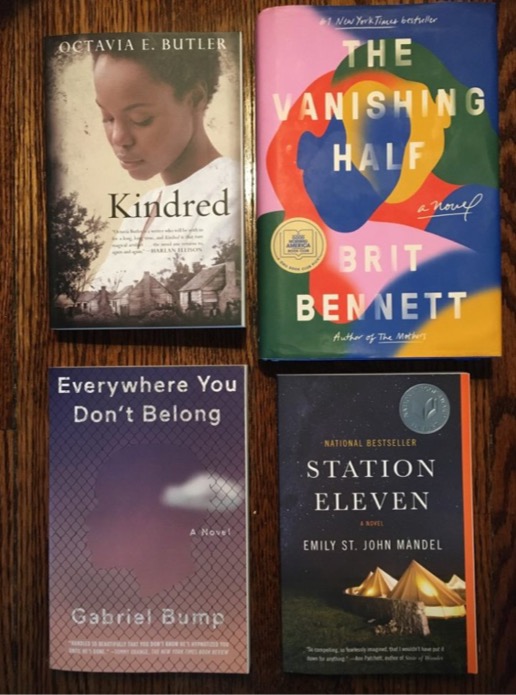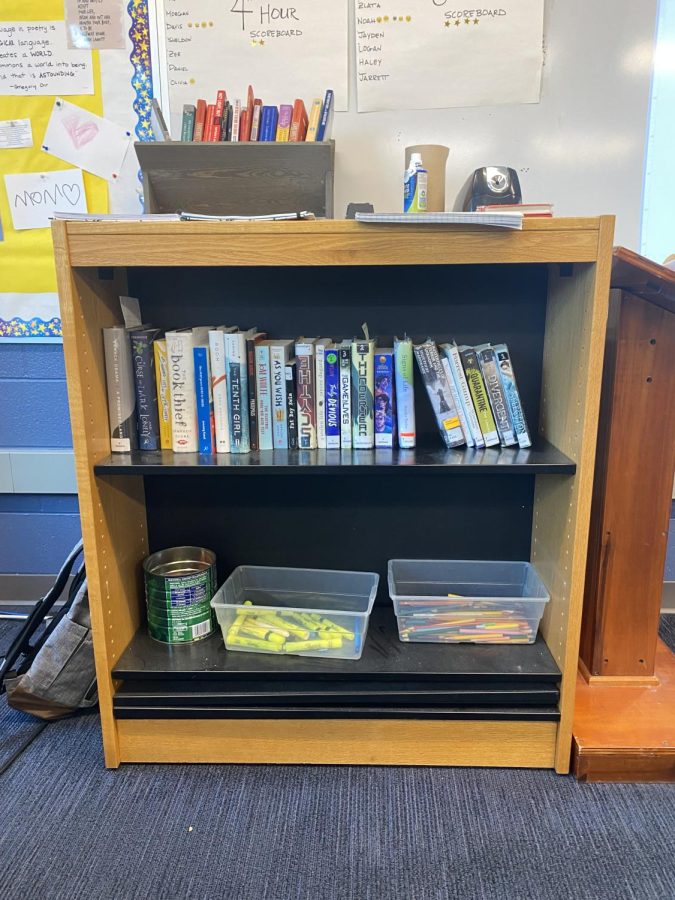English Department Pushes for Choice Reading
Over the past decade, reading for fun has become an increasingly uncommon pastime among teenagers. Recent polls taken by NPR have shown that, on average, American teens now read between one to two leisure books per year.
Mrs. Ford, an AP Literature and English 11 teacher at Berkley admitted that the looming obsolescence of pleasure reading has made itself clear in her classroom. She recounted that she’s had students who will finish a book in class and say something like, “Wow, that’s the first time I’ve finished a book since sixth grade.”
Mrs. Ford shared that she’s noticed many English teachers feel culpable for this recent decline in pleasure reading, or “the death of the joy of reading,” as she referred to it. Teachers believe that the decline stems from students’ disengagement with class texts. The thought is that students do not enjoy reading assigned texts, and, as a result, they associate that disinterest with reading at large. The alternative pastimes now available to teens–i.e. scrolling through social media–have also complicated things. So, with little exposure to books that actually engage them, and the plentiful alternative ways to find stimulation, students are choosing not to read at home. To combat this issue, the Berkley School District has made an objective to integrate more independent and choice reading into every BHS English class.
This district has allotted a 20,000 dollar budget to the new initiative that will be going towards professional development to train teachers how to integrate independent and choice reading into their curricula, build English classes’ classroom library, and also fund a new English 10 independent reading unit.
Stacie Angel, who is in charge of K-12 literacy across the district, is working as a point person on this project. When asked about the reason why this change is necessary, she explained, “teachers anecdotally feel that, if students (are given) choice, they are going to be more interested in reading, and the research definitely also supports that.”
It’s not just teachers and administrators that find choice reading appealing, Senior Lola Belchinsky shared her opinions on how she finds choice books more engaging than assigned ones. She offered, “When you read stuff that you like to read, it definitely makes you feel more passionate about reading, especially since it helps you to realize that there are books out there that are actually relevant to your life and the things that you like.”
Interestingly, the idea to use choice reading as a way to encourage more reading outside of school was inspired by what teachers are doing at the elementary and middle school levels.
Mrs. Ford explained, “A lot of research says that there is a tremendous enthusiasm for reading at the elementary level, and then, after that, something dies.” And through comparing what English teachers at the high school are doing to what teachers at those lower levels are doing, the district found that the abandonment of choice-reading at the high school level is what’s pruning high schoolers’ enthusiasm for reading.
Angel has also been working with Berkley English teachers to help them create specific plans for how they will incorporate more choice reading into their distinctive curricula. She explained that high school teachers are creating these frameworks based on what teachers at the elementary and middle school levels are doing with their students. On March 3, a few BHS English teachers visited middle school classes to see first-hand what those teachers are doing.
Angel explained, “We have readers’ workshops in elementary and middle [school], and that is all based on choice. We’ve stocked the classrooms with classroom library collections. We’ve bought tons of book club books.” She continued, “So this high school phase is kind of the [continuation] of that, but it needs to look different.”
And not only will choice reading look different in high school as compared to middle and elementary schools, but it will also look different from class to class.
Many teachers have already begun integrating choice reading into their curricula. In Mrs. Ford’s English 11 class, the initiative has allowed Mrs. Ford the opportunity to focus more diligently on the independent reading that students are doing in class. At least once a week, Mrs. Ford carves out time to take her students down to the Library Media Center (LMC) where students have independent reading time–called sustained silent reading. What’s maybe most notable about this new addition is that students don’t have to choose the book their independent reading books from a prescribed list, instead, they are encouraged to read any book they’d like.
Mrs. Ford explained, “[Students] can read what they want to read as long as it is not drastically below what I know they are capable of.” She prefers to focus more on ensuring that students are finding books that they are connecting with rather than focusing on if they are reading challenging works of literature. She hopes that “Every student can find at least one book that they authentically enjoyed while they were in [her] class.”
What Mr. Cierpial and Mrs. Walters are doing in their Honors 9 classes looks slightly different from this, as they are mainly focusing on giving their students more choice in the class texts that they read. In the past, Honors 9 classes have worked with the Adventures of Huckleberry Finn by Mark Twain as part of a unit that primarily works with race as a concept. However, this year that novel has been replaced by a selection of four books that students can choose from. The new options are Kindred by Octavia Butler, Everywhere You Don’t Belong by Gabriel Bump, The Vanishing Half by Brit Bennett and Station Eleven by St. John Mandel. Importantly, all of these novels were written fairly recently, and focus on contemporary issues that students can relate to.

The class actually recently finished working with those books, and Mr. Cierpial polled students to get a feel for how they liked the unit. The overwhelming response was that students really enjoyed being able to choose what they read. 71 percent of them responded that it was their favorite part of the unit.
Through offering texts that are more engaging for students, Mr. Cierpial is hoping to “encourage sustained thought.” He explained, “We as teachers are trying to meet kids of a different world and have them see the merit of staying with a story for a long period of time.”
Importantly, each of these books were specifically chosen with another goal in mind: to incorporate more diverse authors and stories–another issue that the district has recently been trying to address.
To that point, Mr. Cierpial explained that incorporating more contemporary texts written by more diverse authors has been an ongoing effort within the district for some time now. Similarly, students have also shown sustained interest in reading more books like that. The American uprisings caused by the killing of George Floyd in 2020 amplified students’ desires to learn about and better understand others’ cultural and racial experiences within America. Thus, this is likely what prompted the district to fast track their efforts to diversify BHS reading materials, and moreover, to properly fund it.
Mr. Cierpial said, “It seems like in the wake of 2020, it’s been building for a long time, but I think that gave greater impetus to the district to really devote resources to this and to make money available so that we could more easily try things out and bring in more books.”
In an ever-evolving world, teachers are constantly looking for ways to adapt to teenagers’ interests and maintain their engagement in their studies. Historically, academia has shown reluctance towards omitting culturally significant texts and teachings. Yet, in the unprecedented times that we are living in: amid a global pandemic, and with conversations about race inequalities in America becoming ubiquitous in all social circles, Berkley teachers are more open than ever to change. And if this means ditching Shakespeare’s sonnets, and welcoming contemporary Sci Fis and coming-of-age stories with protagonists that students will identify with, then BHS teachers are on board. Their goals remain to harbor sustained and critical thinking, only their methods to get there will have to look a little different.

Hello everybody:) my name is Raynah Jacobs. I have had the pleasure of being on the Berkley Writing for Publication staff for Four years now....







